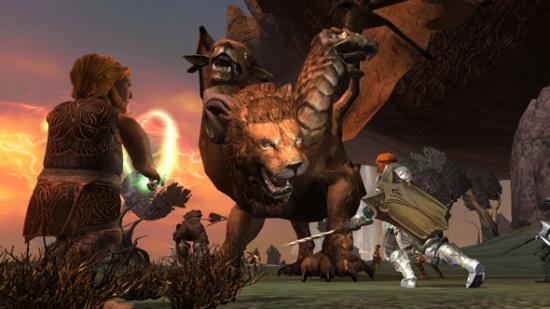EverQuest II has always been something of a black sheep in the MMO flock. It was never as revered as its predecessor, which was on the frontlines of the MMO revolution alongside Asheron’s Call and Ultima Online, nor could it stand up to the steamrolling popularity of World of Warcraft, released a mere fortnight later in November 2004.
It was meant to be the glorious Next Step of the hard-grafting, long-grinding formula that brought MMOs to the fore in the late ‘90s, catering to the stoic ethos of first-gen MMOs: put in the hours, work as a team, master the esoteric systems, and you will be justly rewarded. And, in many ways, EverQuest II achieved that. The problem was that WoW changed the MMO rulebook beyond recognition, dazzling a new generation of gamers (and everyone else, for that matter) to immediately leave its two-week-old rival feeling like a lower-league has-been.
Let’s hope EverQuest II doesn’t go anywhere, but if it does, here are the best free MMOs on PC.
Also – cue sad trombone jingle – because EverQuest II was designed under the assumption that single-core CPUs would continue to get bigger and better (possibly based on Intel’s rather off-the-mark predictions). That did not happen, so the game ran poorly at the time and never really improved as CPU technology veered off down the multicore route – though, presumably by sheer brute force, it runs fine on my quad-core i7.
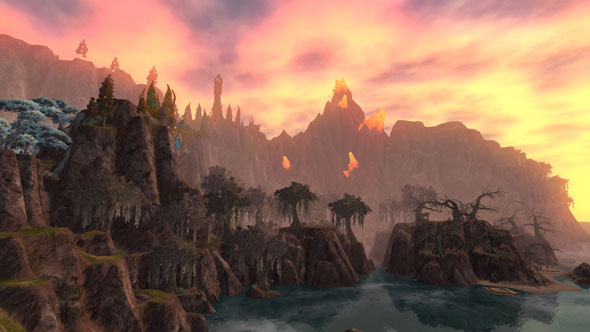
Yet, here we are, 13 years later and EverQuest II lives on, kept on life support by a community that is torn between love for its world, lore, old-school mechanics, and frustration over the way it has been run in recent years. The complaints are rooted in two key events in the game’s history. First, the decision by Sony Online Entertainment in 2011 to shift it to fit a free-to-play model, causing a creep of what many players feel are pay-to-win features. Second, Sony’s sale of SOE to investment company Columbus Nova in 2015, which led to staff layoffs, the departure of key community-facing figures in the company, and the rebranding of SOE as Daybreak Games.
But, for all its tribulations, people recall the early days of EverQuest II fondly. “It was great at launch – difficult, grouping required from a low level, progression was slow and death was painful. Most of the EQ2 vets are old EQ1 vets who thrived in the challenge,” recalls Reddit user 1k. Others have praised its entertaining questlines, crafting systems, and a house-decorating community that remains vibrant to this day.
Unfortunately, 1k, like many others I spoke to, feels that the game is on a downward spiral: “Over the years the difficulty has been written out of EQ2. It’s just a cash cow now,” he says.
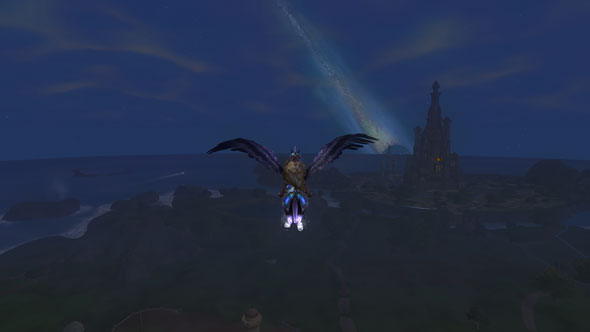
Going on a little romp around EverQuest II’s world of Norrath, the good and the ugly of the game quickly manifest themselves. Mounted on a flying horse-thing (no, not a unicorn), I was struck by how good the world still looks, all homely and curvaceous and unfettered by the rigid, right-angled geometries of the MMOs that came before it. Arriving in the Qeynos harbour, I was greeted by seagulls flying overhead and a pastel-pink sunset, with NPCs bimbling around, turning their heads as I walked by and chirping away in a panoply of accents that had more variety in five minutes than you would hear in a 30-hour tour of Skyrim. A lot of love went into designing this world.
But it also feels like a world very specifically designed around accommodating a lot of players, making its sprawling town squares and eerily stretched-out interiors feel all the more sparse, like they never anticipated for us to see them this empty. Take, for example, this ‘bustling’ plaza at the base of Qeynos Castle…
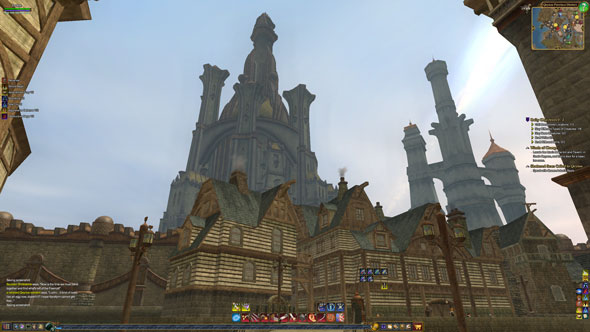
And spare a thought for this here smithy, doomed to forever pay excessive rent on a building intended for much more custom…
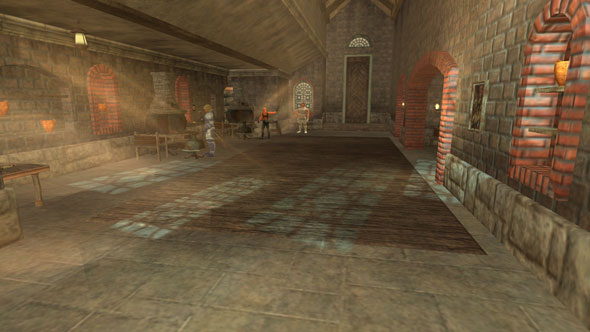
It is all very welcoming nevertheless, especially with the interface off, but the free-to-play layer soon rears its head. The latest marketplace offers pop up in the middle of your screen upon spawning, and there is a shameless shopping-trolley icon right there in the main UI (they could have at least have made the icon an old-timey market stall to maintain some semblance of immersion).
A list of schematic Daily Challenges perches in the top-right corner of the screen (visit x places, kill x different monster types etc.), and I am told that one of the several forms of experience added to the game in recent years, ‘Guided Experience’, accrues even when you are logged out. It all has the unpleasant air of one of those exploitative free-to-play online clicker games, stickered all over a once-proud product.
Then, the kicker. I somehow manage to kill my level 95 heroic avatar (by dismounting my mount mid-air and plummeting into a field, if you must know), whereupon I am given the option to either revive at a waypoint or pay real-world money to revive on the spot. It is a jarring moment, undermining the gruelling feeling of consequential death that this game once championed.
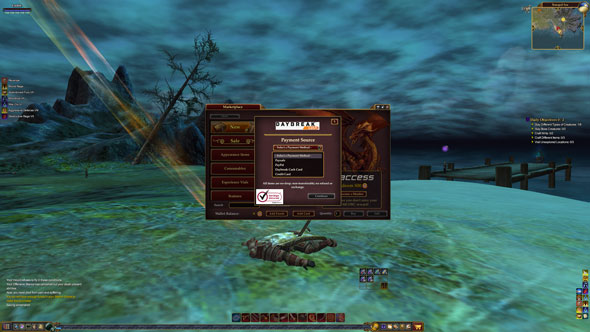
One of the perks of an ageing MMO is that the dwindling but dedicated community can enjoy more direct communication with the developers; a kind of camaraderie arising from the shared understanding that this virtual home has seen its most populous days, and that everyone will need to band together to sustain it. But that is not the case here.
“There used to be two-way communication with SOE, sometimes heated, but always two-way,” Bob, a disillusioned player who at first suggests I am a shill for Daybreak Games before I persuaded him otherwise, tells me. “Now, there is ‘Shut up and take it’ from the team.” Communication has been pared back and heavily moderated, with players accusing Daybreak of rejecting all criticism and clamping down on perceived dissent. “On Discord, the dev team just bans people when they don’t like what’s being said,” Djak tells me. “They even banned Feldon, the guy who runs the best EQ2 fan site (EQ2Wire). He eventually stopped working on the site.”
Morgan Feldon, I soon learn, was something of a pillar in the EverQuest II community. He began playing in 2007 and blogged about the game exhaustively, eventually setting up the EQ2Wire website. He had good relations with several SOE developers, and would even visit their offices in San Diego to discuss the game. But when the company reshuffled to become Daybreak, communications began to diminish, so Feldon stepped up to do something about it. He even helped the developers set up the EverQuest II Discord channel that he would eventually be banned from.
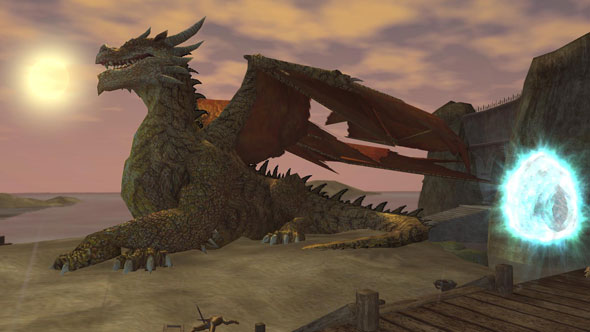
“The idea was that it would augment the forums, add to the community, and allow players and developers to come together and share feedback about the game,” Feldon tells me. “This is not what happened. With each developer granted admin access, it quickly became clear that any criticism, no matter how politely phrased, was means for removal. After the devs withdrew from the forums, the Discord channel, the main place for players to ask questions, became an exclusive developer-run ‘club’.”
Initially, Feldon was a moderator on the channel, taking it on himself to unban players who did not break any rules, but who he believed were making constructive criticisms that Daybreak were refusing to listen to. Feldon left the channel after some other moderators questioned his approach, but returned a short while later, upon discovering that it now seemed to be the only place where players could talk to developers. He didn’t last long.
“I was banned for making what the developers felt was a snarky comment about how confusing one of the item examine windows were. Not just banned temporarily, but permanently with an IP address block,” he tells me. “Also the last time I checked, I was banned from the forums. If I could take back one thing, I would never have started the Discord chat.”
I emailed EverQuest II producer Holly Longdale for Daybreak’s take on this situation, and put players’ complaints that the company tends to ban those who criticise it to her, but she chose not to address these issues directly. She replied with the following statement: “As to communication, our devs go where they get the best and most constructive input to improve the game. We try to foster a two-way, supportive environment for devs and players, and we do our best to ensure that EQ2 remains a positive community and experience.”
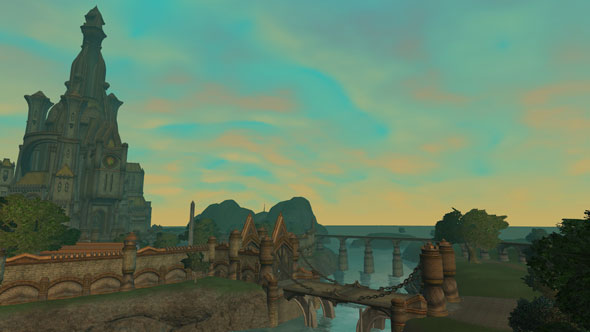
Feldon no longer plays EverQuest II, blaming bloated health pools, microtransactions, and cryptic levelling systems that have crept in with recent expansions for its demise. Ascension is one such system. Introduced in 2016 in Kunark Ascending, EverQuest II’s 13th expansion, Ascension is a time-gated late-game levelling system with its own classes. Bob explains it to me: “The Ascension abilities were simply a way to time-gate players, as there really wasn’t much content. You could only earn so much Ascension per day, and you had to remember to pick up scrolls at a trainer.” Most players I spoke with agreed that it is a sluggish system, which even hardcore players struggled to master before the release of the next pricey piecemeal expansion.
But there is a workaround: “You can grind for a month to upgrade one level [in Ascension],” EverQuest forum user Kokorobosoi tells me. “Or hit the convenient button to buy it now with cash.”
Bob elaborates: “The reward for mastering all four Ascension classes is an excellent charm item, but for Gold Access members only [a minimum $9.99 monthly subscription]. You can also fill out the Ascension XP bar with a potion that was given out, er, sold, with the $140 edition of Kunark Ascending, but that is not generally available.”
For all these criticisms of how EverQuest II is run, they come from a place of deep fondness for the game itself, or at least what it once was. Feldon signed off our email exchange by saying that he hoped I was getting some perspectives on the positive sides of the game, pointing to the housing and crafting systems. “There are thousands of items that players can place in their homes, and a thriving Play Studio marketplace where those with knowledge of 3D modelling can actually design furniture and add it to the house,” he tells me. To this day, housing in EverQuest II remains impressive, with many players dedicating more time to decorating and designing their homes than to hardcore raiding, and even earning a little real-world money from their designs.
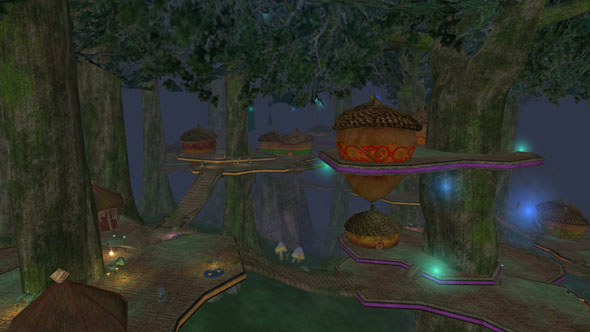
Djak and her husband have been on plenty of sojourns to other MMO worlds – on-again, off-again trysts with WoW, Elder Scrolls Online, Guild Wars 2, to name a few – but always find themselves returning to Norrath. “There’s always something to do in EQ2. People can craft, decorate, harvest for rare components, hunt for shinies, run agnostic dungeons, quest, solo, duo, group or raid,” she says. “In WoW there are groups and raids, and their cross-server tools are way better, but there’s such a huge focus on gear that you get kicked from a group if you’re not good enough. Also, EQ2 has a greater sense of community, I’ve felt, having played both games. There’s way fewer young folks playing, and the ones who do are playing with their parents, so less trolling and crap talk.”
Some are even more unequivocal in their praise. Trunks676 was another EQ2-WoW go-between before eventually settling on the former. “EverQuest II doesn’t get enough credit for how innovative it was in the MMO space,” he informs me. “Player housing, heritage quests (that tied into our EQ1 nostalgia), the ability to switch from one faction to another through a questline, and much more.” He acknowledges that the game’s popularity was hindered by it being too hardcore on launch, but believes that by 2006, around the time of the third expansion, Echoes of Faydwer, it had found the perfect balance. “It kept its identity while understanding what made WoW so popular. I could pick my class instead of the tiered approach, soloing became easier, and it was less harsh… it was the perfect storm.”
Nor does Trunks believe that Daybreak are failing in their duty to players. “It’s over a decade old, it’s not WoW, and it doesn’t have the population to make money consistently,” he says. “At its core it’s a business and they are trying to keep it relevant, but I just feel it’s not going to get the investment of money needed that true fans want. Whatever happens, EverQuest II will always be my MMO home.”
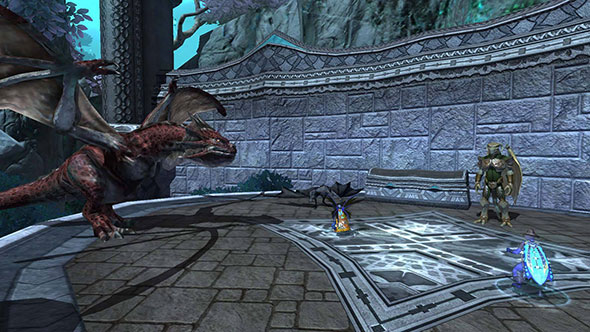
EverQuest II is tricky to frame as a failure or success. It is more like a tragic hero: a scarred survivor hurt at first because it stayed true to traditional MMO systems, before later going through the ignominy of being slathered with layers of bloat that made it foreign even to those who stood by it. But Trunk’s comments highlight the tension at the heart of every MMO that becomes particularly prominent in its twilight hour: it is both a business and a home.
Longdale’s response to player complaints is formulaic, offering the now familiar line that all paid power can be obtained through gameplay alone, and is aimed at those who “are happy to pay for convenience or cool vanity items.” One thing she said, however, stood out to me: “Overall, it is really difficult to convey to players that we need to run a healthy business to keep our awesome game alive.”
Now, that could be read as typical company obscurantism, but on the other hand, it could be a plea that Daybreak’s hands are tied, that EverQuest II has nowhere left to go, and has reached a critical point where all the stops have been pulled to ‘keep the game alive’. But when a dev team’s creative coffers seem to have run dry and all that is left is monetisation, you question whether a game’s continuation is really in the interest of the players any more.
Would Asheron’s Call players have been happy to see their world reach a similar state? Or is it better to get closure, painful though it may be, rather than hold onto a tainted version of the experience they were originally sold on – one, admittedly, now defined by wistful memories of what once was? In the end, the players will decide, but on current evidence, it seems that many are now ready to finally let go.
